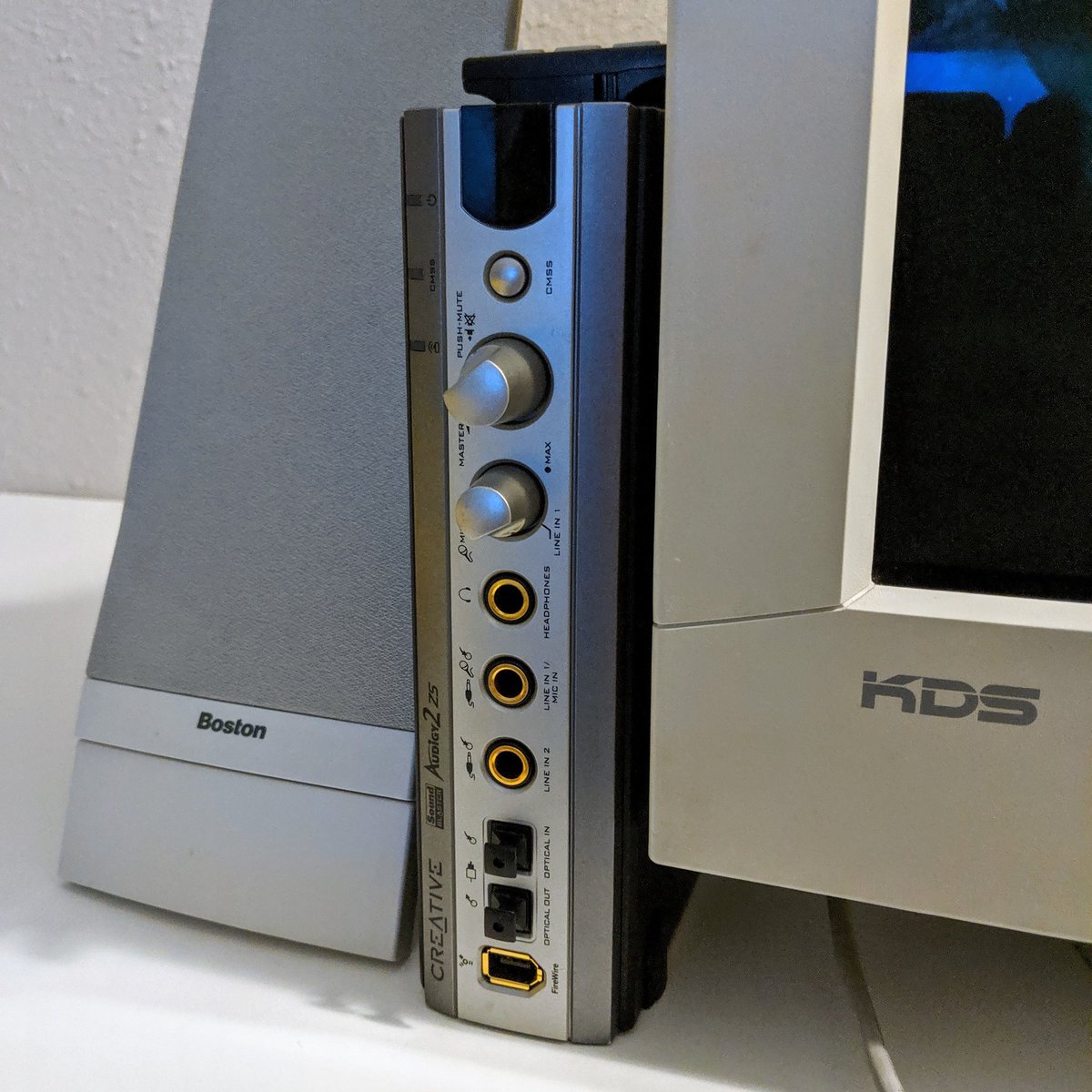
- #CREATIVE SOUND BLASTER MODEL SB0680 DRIVER FOR XP FULL#
- #CREATIVE SOUND BLASTER MODEL SB0680 DRIVER FOR XP PROFESSIONAL#
- #CREATIVE SOUND BLASTER MODEL SB0680 DRIVER FOR XP SERIES#
Using the DSP with high-resolution audiostreams resulted in the Audigy's characteristic downsampling (to the DSP's native-rate of 48 kHz), for mixing with other audio sources. However, the high-resolution audio was achieved by bypassing the DSP, being decoded directly by CA0151 chip also known as "p16v" to take advantage of which Creative substituted CA0102 for the old CA0100 used in Audigy 1. To address the biggest shortcoming of the original Audigy, a revised DMA engine allowed end-to-end high-resolution (24-bit) audio playback: 96 kHz 6.1 channel recording, and 192 kHz stereo. Collectively CA0102 and CA0151 was sometimes referred to as EMU10K2.5 (The CA0102 chip alone is just a version of Emu10k2 ).

The Sound Blaster Audigy 2 (SB0240) (September 2002) featured an updated EMU10K2 processor called CA0102 to gain access to CA0151 which is a separate chip.
#CREATIVE SOUND BLASTER MODEL SB0680 DRIVER FOR XP SERIES#
Second generation Sound Blaster Audigy 2 series Sound Blaster Audigy 2 The VX (SB0060) is a low-profile PCI card in the Audigy family. It came with a Firewire port and was introduced before the AS models.

The Sound Blaster Audigy Platinum EX (SB0090) is similar to the Audigy ES, but supported an external break out box instead of the standard internal version. The Sound Blaster Audigy LS (SB0310) is similar to the Audigy SE in that it supports neither hardware acceleration nor FireWire. The SE is a low-profile PCI card in the Audigy family, and still has many unsold units at online retailers unlike the other Audigy cards.Īnalog-Digital Converter (ADC): 24 bit 96 kHzĭigital-Analog Converter (DAC): 24 bit 96 kHz It is possible that the same card was sold in different markets with different names, that perhaps the cards were sold with one name for a while and later it was changed or it's possible they could even be slightly different cards. The Audigy SE and Audigy Value both carry the SB0570 model number. With these cards only one of the mic, line in, or AUX sources may be unmuted at a time. With the CA0106, the SE/Value are limited to software-based EAX 3.0 (upgraded to software-based EAX 4.0 with a driver update), no advanced resolution DVD-Audio Playback, and no Dolby Digital 5.1 or Dolby Digital EX 6.1 playback. The Audigy SE (SB0570) and Audigy Value (SB0570) are stripped down models, with a less expensive CA0106 audio-controller in place of the EMU10k2.
#CREATIVE SOUND BLASTER MODEL SB0680 DRIVER FOR XP FULL#
This variant (SB0160) uses the full EMU10K2 chip (CA0100 chip ) and is, as a result, quite similar in feature set. The ASIO and break out box features were an attempt to tap into the "home studio" market, with a mainstream product.

Some versions of Audigy featured an external break out box with connectors for S/PDIF, MIDI, IEEE 1394, analog and optical signals.
#CREATIVE SOUND BLASTER MODEL SB0680 DRIVER FOR XP PROFESSIONAL#
Īudigy card supports the professional ASIO 1 driver interface natively, making it possible to obtain low latencies from Virtual Studio Technology (VST) instruments. (A resulting class-action settlement with Creative later awarded US customers a 35% discount on Creative products, up to a maximum discount of $65.)Īside from the lack of an end-to-end path for 24-bit audio, Dolby Digital (AC-3) and DTS passthrough (to the S/PDIF digital out) had issues that have never been resolved. This fact was not immediately obvious in Creative's literature, and was difficult to ascertain even upon examination of the Audigy's spec sheets. So despite its 24-bit/96 kHz high-resolution DACs, the Audigy's DSP could only process 16-bit/48 kHz audio sources. The Audigy and Live shared a similar architectural limitation: the audio transport (DMA engine) was fixed to 16-bit sample precision at 48 kHz. The audio processor could mix up to 64 DirectSound3D sound channels in hardware, up from Live!'s 32 channels.Ĭreative Labs advertised the Audigy as a 24-bit sound card, a controversial marketing claim for a product that did not support end-to-end playback of 24-bit/96 kHz audio streams. The Audigy cards equipped with EMU10K2 (CA0100 chip) could process up to 4 EAX environments simultaneously with its on-chip DSP and native EAX 3.0 ADVANCED HD support, and supported from stereo up to 5.1-channel output.


 0 kommentar(er)
0 kommentar(er)
